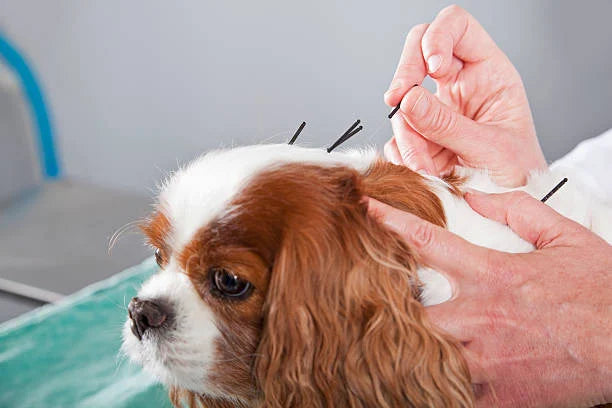
Whole Health this Fall: Integrating Holistic Care with Modern Veterinary Diagnostics
Share
As the leaves turn and the air cools, fall becomes a season of reflection — not just for pet owners but for veterinary teams, too. Autumn wellness check-ups offer an ideal opportunity to embrace a whole-health approach to care: one that blends cutting-edge diagnostics with holistic therapies to support pets from nose to tail.
In this blog, we explore how veterinary technicians can champion this integrative mindset, especially during the fall season when allergies, arthritis flare-ups, and immune transitions are common.
What Holistic Really Means
Holistic veterinary care embraces a broad range of modalities aimed at supporting the body’s natural healing ability, reducing stress and inflammation, and improving overall wellness. These therapies can be used alone or in conjunction with diagnostics and conventional treatments, creating a well-rounded, patient-centered approach.
Here are some of the most common and impactful holistic therapies veterinary teams may integrate:
Acupuncture
What it is: An ancient Chinese therapy involving the insertion of fine needles into specific points on the body to stimulate energy flow (Qi).
Benefits: Pain relief, improved circulation, reduced inflammation, and support for neurologic or musculoskeletal conditions.
Common Uses: Arthritis, hip dysplasia, intervertebral disc disease, post-op recovery, gastrointestinal disorders.
Herbal Medicine
What it is: The use of plant-based compounds (Western or Traditional Chinese Herbal Medicine) to support organ function, immunity, and chronic disease management.
Benefits: Natural anti-inflammatory and antioxidant support, fewer side effects when used properly, and targeted organ support.
Common Uses: Liver or kidney support, skin conditions, anxiety, cancer support, digestive imbalances.
Nutritional Therapy
What it is: A therapeutic approach that uses tailored diets and supplements to manage disease or support wellness.
Benefits: Helps manage inflammation, weight, allergies, GI disease, and chronic organ issues through diet.
Common Tools: Prescription diets, raw or home-cooked diets, supplements like omega-3s, probiotics, turmeric, or adaptogens.
Chiropractic & Manual Therapy
What it is: Adjustments or bodywork to improve alignment, relieve nerve impingements, and restore mobility.
Benefits: Enhanced range of motion, reduced pain, better performance, and injury prevention.
Common Uses: Lameness, sports/working dogs, post-injury care, neurologic deficits.
Behavioral & Environmental Enrichment
What it is: Addressing mental and emotional health through structured enrichment, training, and calming therapies.
Benefits: Reduced anxiety and destructive behaviors, improved quality of life.
Tools: Pheromone therapy, calming music, puzzle toys, TTouch, herbal calming supplements.
Why Diagnostics Still Matter
While holistic therapies focus on balance and function, diagnostics provide crucial insights into the underlying issues. Fall is a great time to update:
-
Comprehensive lab panels (bloodwork, urinalysis)
-
Thyroid and endocrine testing, especially in older pets
-
Radiographs or ultrasounds for chronic pain or internal issues
- Fecals and parasite screening before the winter months
Integrative care is not alternative care. Diagnostics help rule out serious conditions, track progress, and determine whether a holistic approach is effective or needs to be adjusted.
Common Fall Use Cases
Case 1: Senior Dog with Arthritis
-
Modern Diagnostics: X-rays, CBC/chem to monitor inflammation
- Holistic Support: Acupuncture, omega-3-rich diet, joint supplements, therapeutic massage
Case 2: Cat with Chronic Kidney Disease
-
Modern Diagnostics: Blood pressure monitoring, regular labs
- Holistic Support: Fluid therapy, renal diet, herbal kidney support
Case 3: Anxious Dog Before Holiday Travel
-
Modern Diagnostics: Screening for underlying metabolic imbalances
- Holistic Support: Calming herbs, behavior support, Thundershirt or massage therapy
Training & Resources
To feel confident in integrating both approaches, veterinary technicians should pursue continuing education in:
-
Fear-Free® and low-stress handling
-
Veterinary acupuncture or rehab assistant certifications
-
Herbal or nutritional therapy basics for techs
- Workshops on interpreting diagnostics to support wellness plans
Encourage cross-training with integrative veterinarians or holistic specialists when possible, and lean into trusted CE providers like IVAS, AHVMA, and NAVTA.
